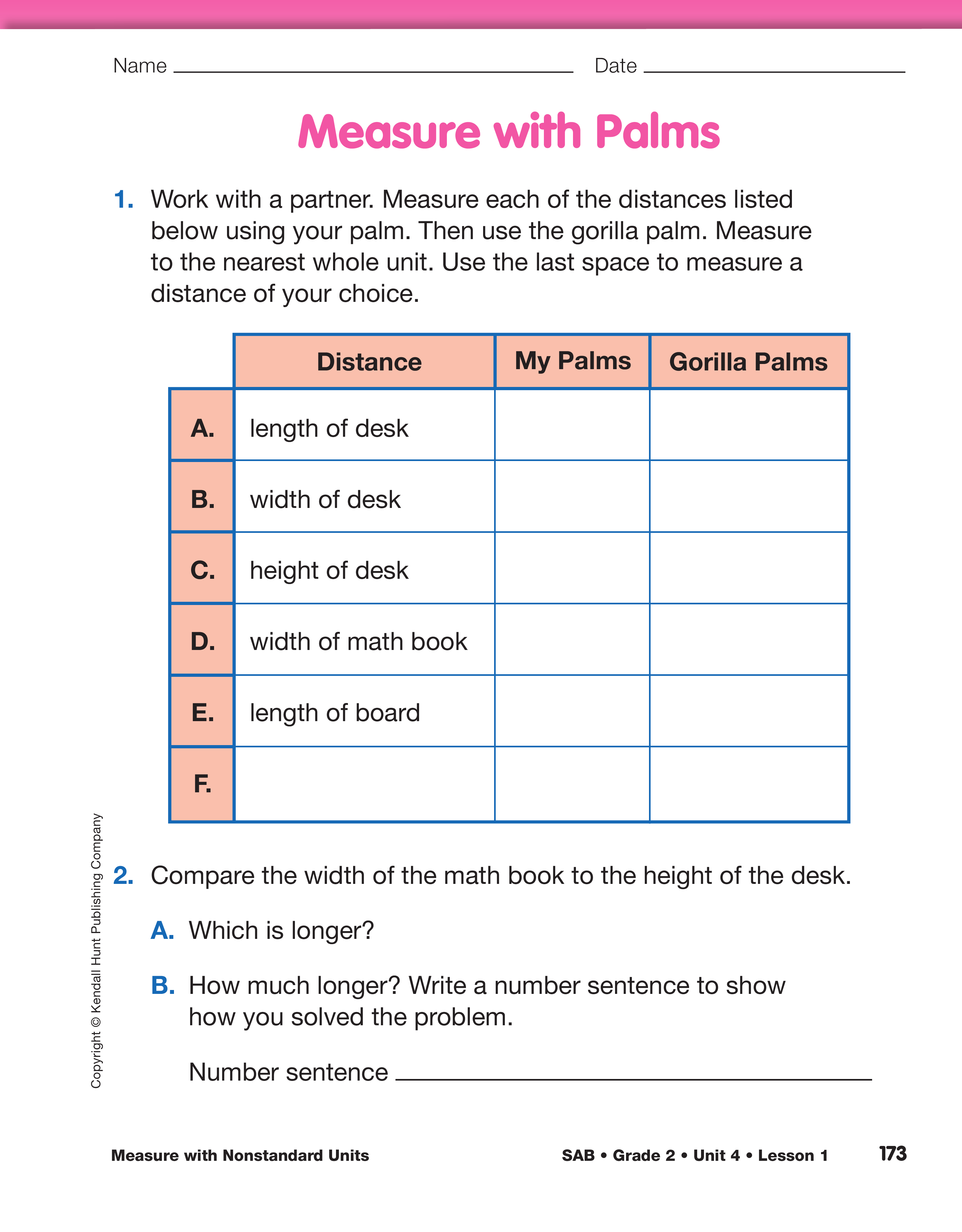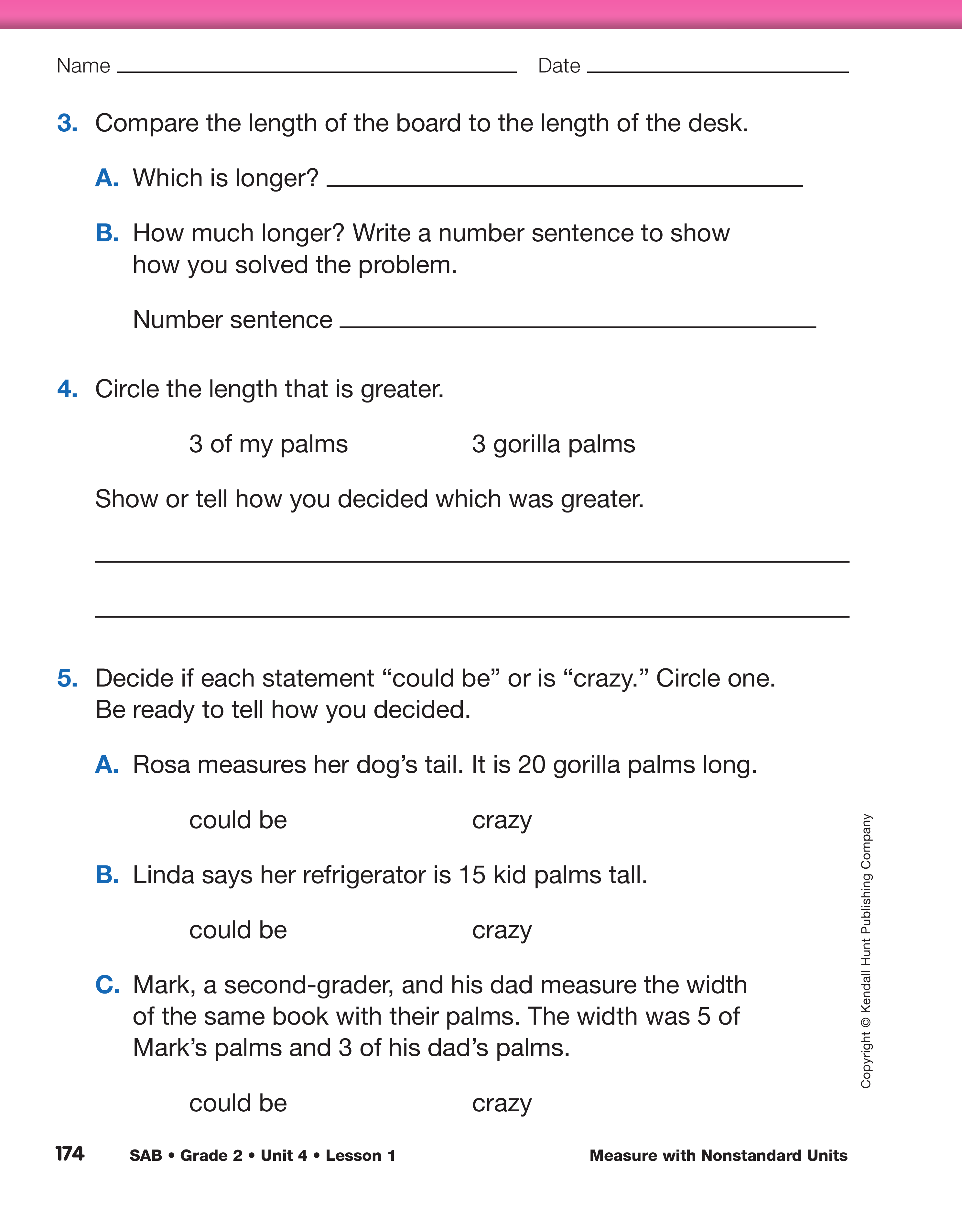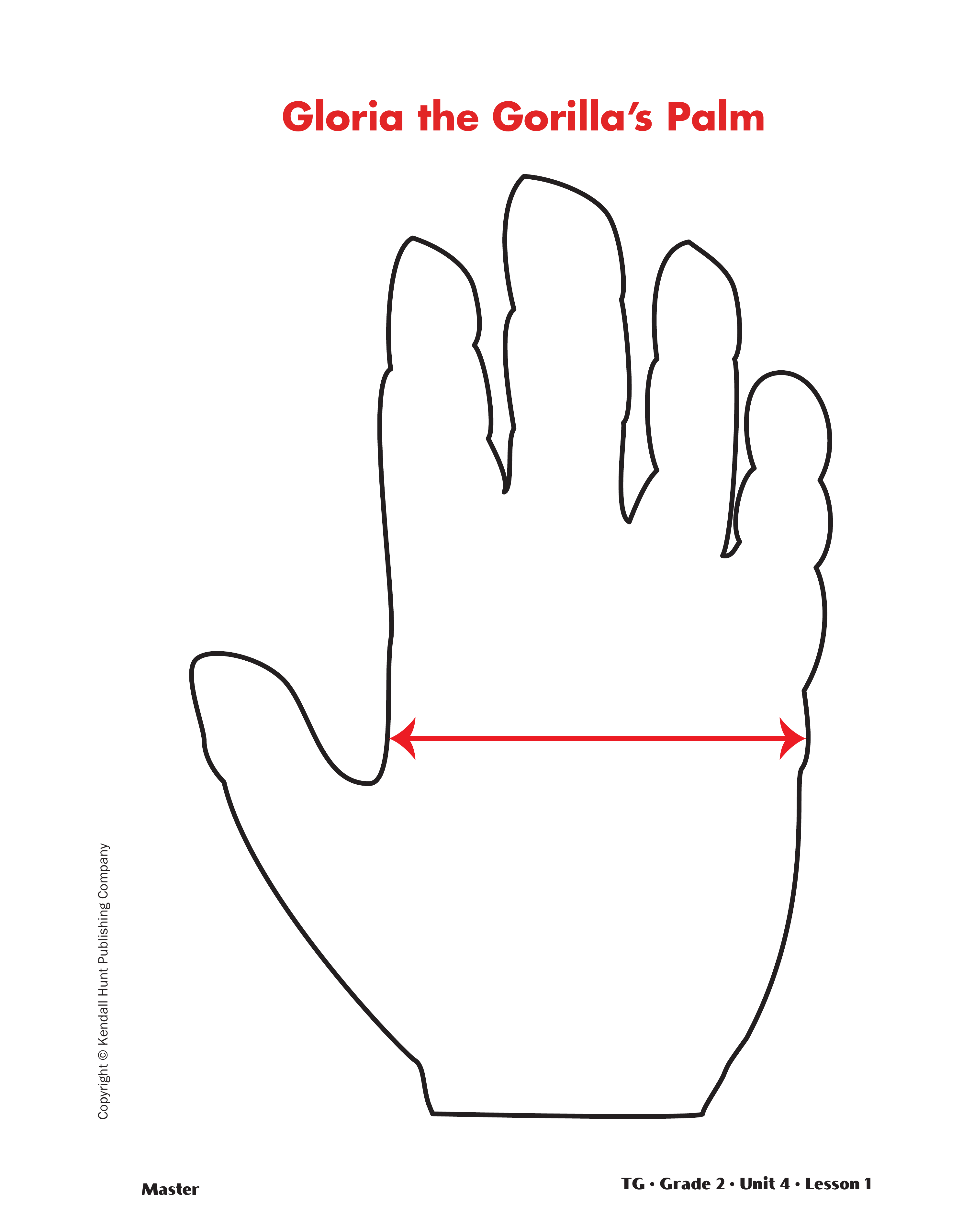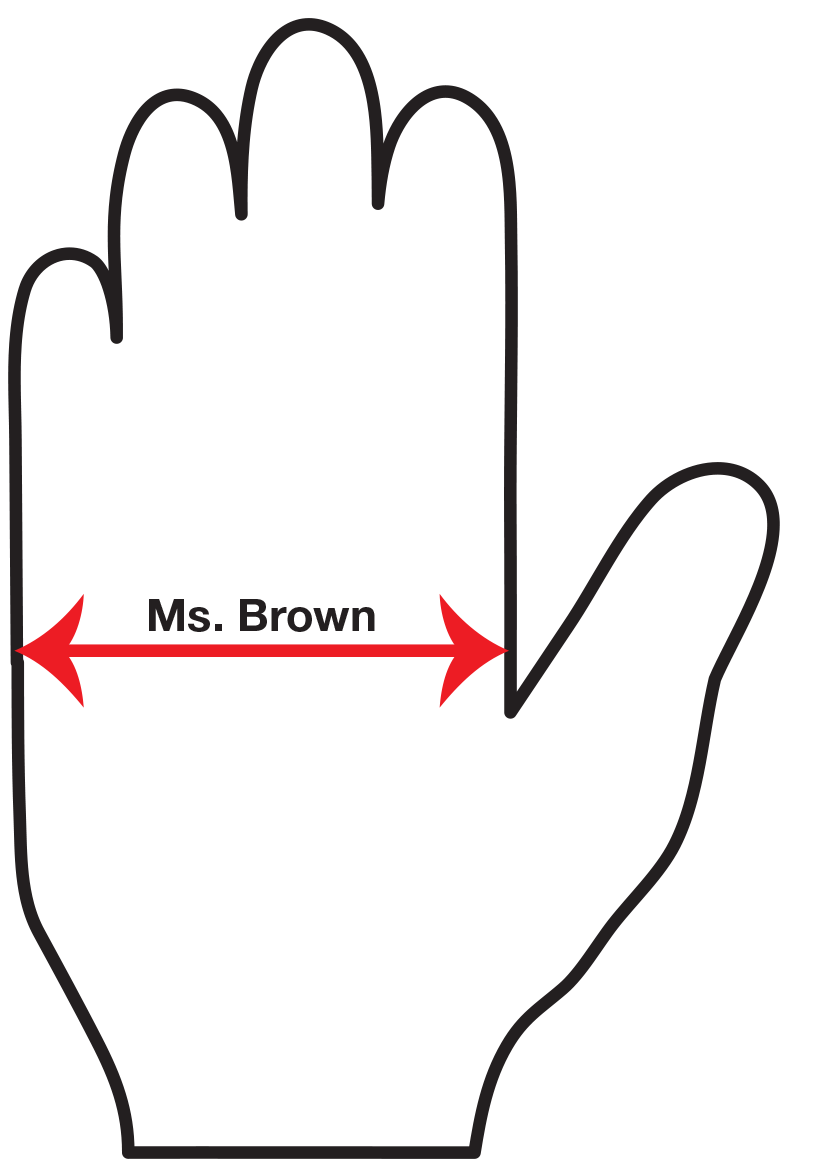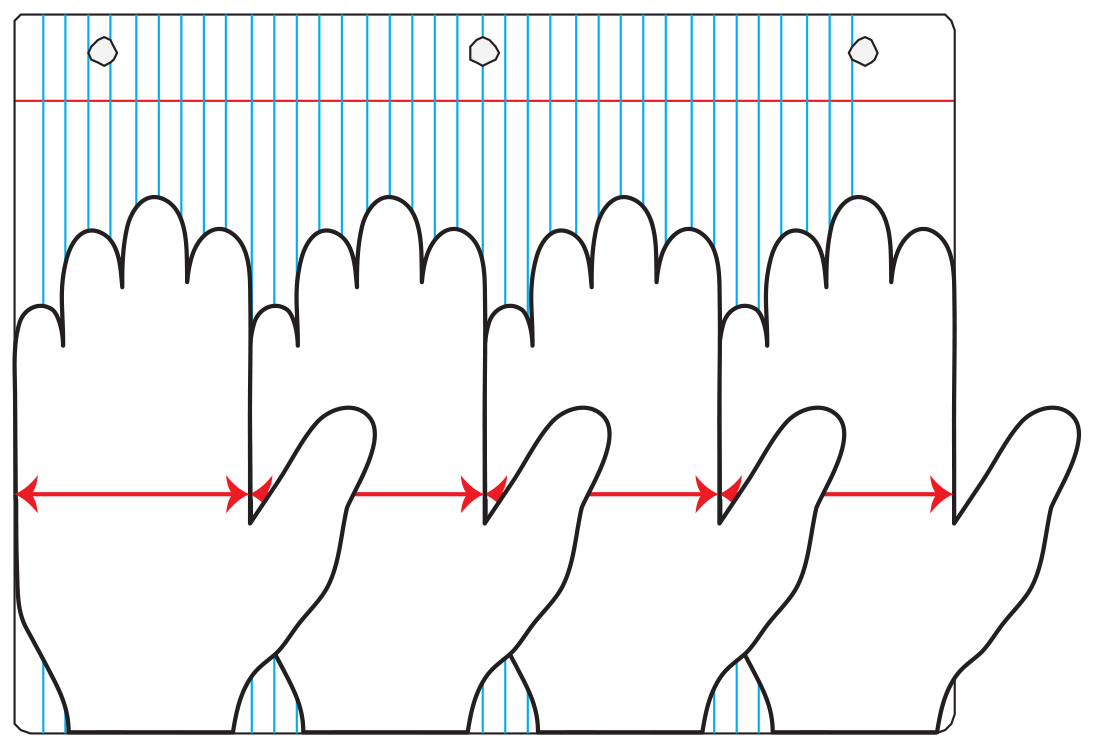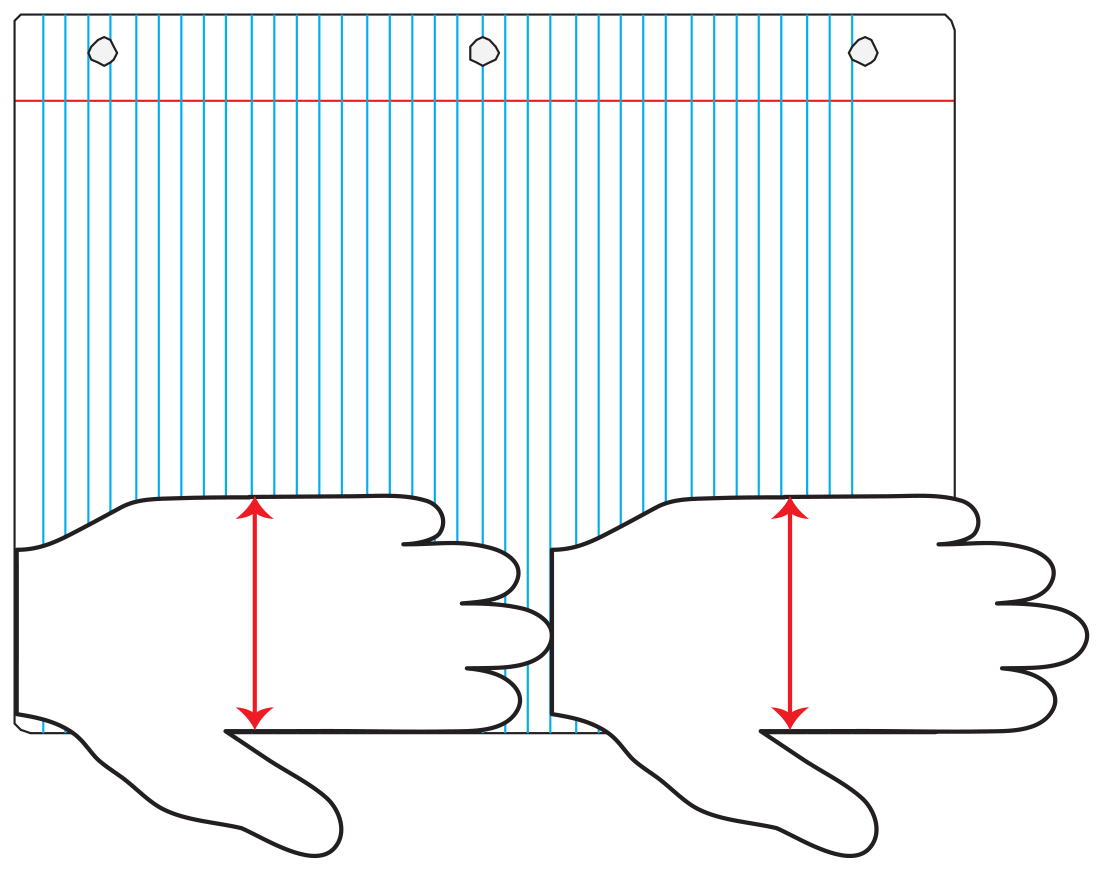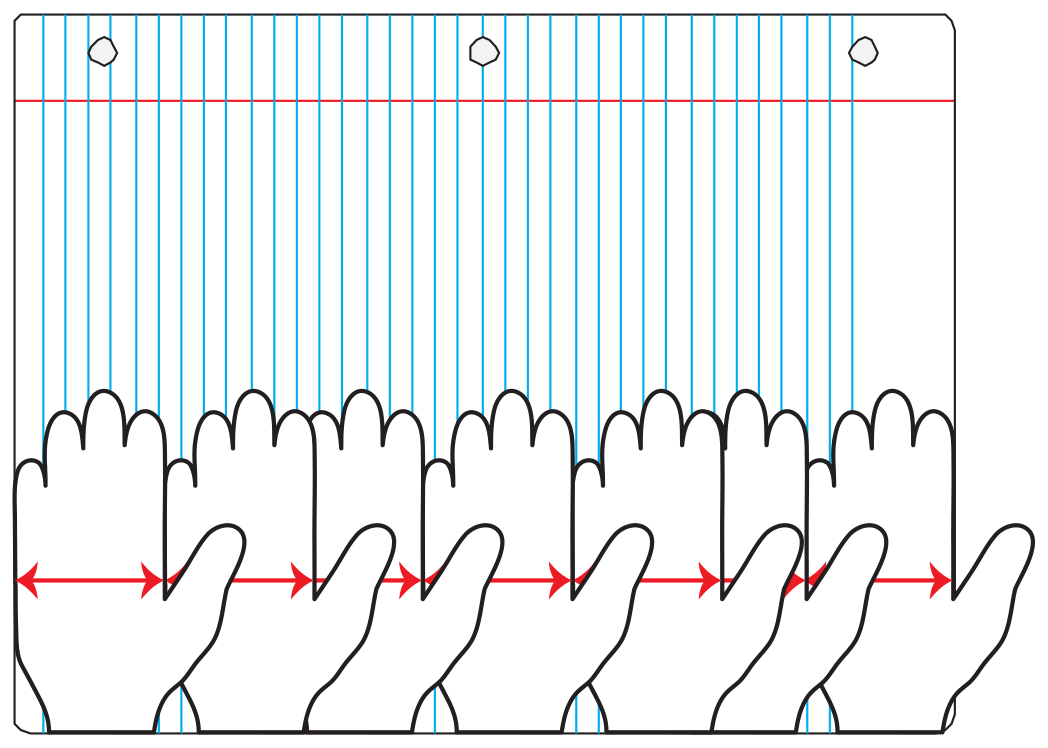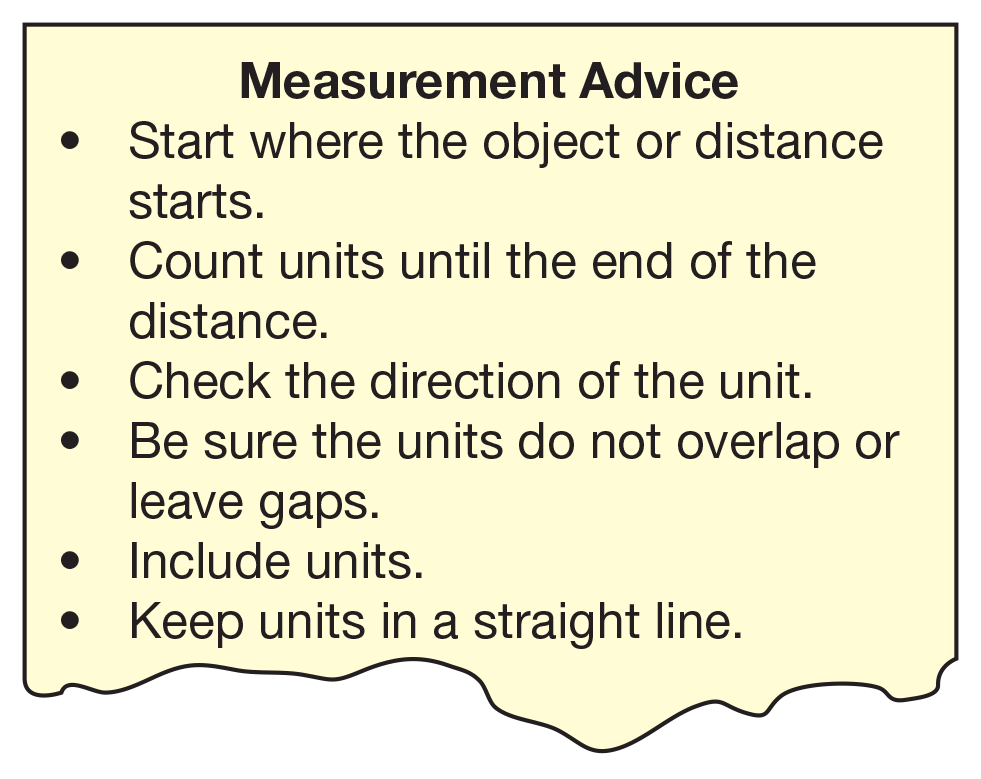Measure with Nonstandard Units
Est. Class Sessions: 2–3Developing the Lesson
Part 1: Measuring with Palms
Make a Unit Palm. Read aloud the book Actual Size by Steve Jenkins. As you read, discuss the sizes of various animals and their body parts. Upon finishing the book, tell students that they will be using their body parts to measure different objects.
Show students your hand with your fingers closed and your thumb open or perpendicular to your fingers. See Figure 1. Ask students to show you their hand in the same fashion. Show students the distance across the palm, or the width of the fingers. Tell them that this distance is called a palm. Show students the gorilla palm on the cover of the Actual Size book.
Ask:
Ask a student volunteer to trace your palm onto the sheet of paper you have displayed. Cut out the tracing of your hand and use a ruler or straightedge to draw a line across your palm. Write your name on your palm tracing. See Figure 1.
Give each student a sheet of drawing paper and a ruler. Ask them to work with a partner to trace their palm and cut it out. Students should then label their palm unit with their names and draw a directional line. Then ask students to repeat this process two more times so they have three unit palms. Ask students to put two palms away and keep one out on their desks.
Find a Distance of One Palm. Show students one of your unit palms again and walk around the room comparing distances to your one palm unit.
Ask:
Eventually compare your palm unit to one of the distances equal to your palm unit that you identified prior to the lesson. See Materials Preparation. Attach your palm to that distance. For example, the width of the doorframe is equal to one palm unit.
Now ask students to find a distance in the room equal to one of their palm units.
As students wander the classroom looking for distances, ask:
Once students have identified a distance equal to one of their palm units, ask them to attach the unit to the distance with a piece of tape. When students are finished they should return to their seats. Ask students to look around the room searching for palm units.
Ask:
Measure with Palm Units. Ask students to place the two palm units they prepared earlier on their desks. Give each student a sheet of drawing paper and ask him or her to use the two palm units to measure the length of the long side of the paper. Give students a few minutes to experiment with this task.
As students are working, ask:
After students have finished measuring the length of the paper in palms, ask a student to show other students how they found their measurement. See Figure 5.
Ask:
Line up your palm units on the display. Place the heel of one of the palm units above the tip of the fingers on the other palm unit to measure the length of the drawing paper. See Figure 6.
Ask:
Line up your palms on the display, but overlap the palms some. See Figure 7.
Record these and any other initial ideas students have on a sheet of chart paper titled "Measurement Advice." See Figure 8. Additional ideas will be added later in the lesson. Display this chart for the remainder of the unit as it will be referred to in later lessons.
Direct students' attention to the Measure with Palms pages in the Student Activity Book. Review the list of distances to be sure all students know which distances are being referenced. For example, students must be clear about which board length they are to measure. It is important all students measure the same distances so comparisons can be made.
When students are ready, ask them to measure the distances listed in Question 1 using the two palm units they cut out earlier.
After students are done collecting their measurements, ask:
Measure with Gorilla Palm Units.
Show students the gorilla palm on the cover of the Actual Size book.
Distribute copies of the Gloria the Gorilla's Palm Master and ask students to cut it out. Tell students they are going to measure the same distances with Gloria's palm.
Ask:
Ask students to measure the previously measured distances but this time with gorilla palms. Students should work with a partner to place one palm next to the other repeatedly for each length. Students will record these measurements on the Measure with Palms page in the Student Activity Book.
Compare Palm Measurements. Once students have finished collecting their measurements, ask them to work with a partner to complete Questions 2–5 while they wait for others to finish.
Once everyone has collected his or her measurements, ask:
Ask students to complete Questions 2–5 with their partner, then ask:
Continue to discuss student responses to Questions 3–5. Ask students to share their reasoning to the "could be" or "crazy" statements in Question 5.
















